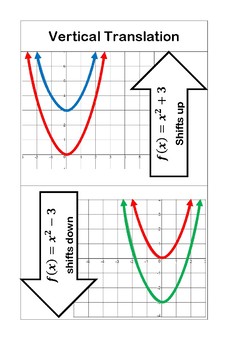

In particular, if (as your initial example suggests) you were taught to use the term "stretch" for both increasing and decreasing the height or width, then you don't need to use the term "compress". You should use the terminology of your own classroom and textbook, and not worry if others differ. This is an area where it is dangerous to get information online, because different sources use different terminology, which sometimes seems (or actually is) contradictory. compression by a factor of 3, which would have to mean that k = 1/3 because 1/ 1/3 = 3.

but the transformation in the question was clearly stated as a hori. compression by a factor of 1/k, which would be 1/3. If what I read online was true then this would be a hori. I am confused about why it would be 1/3x because then that means that k = 3.

The answer for the mapping rule if this was the only transformation would be (1/3x, y). Of course, to do this I would have to take these transformations and create a mapping rule. I am very confused because what I read online contrasts what I have been taught, as I believe that you could call most transformations affecting "a" and "k" a stretch but maybe not a compression.Īlso, on one question I was told to map f(x) = sqrt(x) after I apply multiple transformations. Would this also be a vertical compression by a factor of 1/2 based on what I saw online? In this example, k=2, so if I followed what I saw online then this would be a horizontal compression by a factor of 1/2? I am also confused because when I search online, sources tell me that when a > 1, there is a vertical stretch by a factor of "a", but in my case a < 1 and I believe it is still a vert. What would the vertical and horizontal compression be and why? Would the horizontal compression be by a factor of 2 because you would have to divide all previous input values by 2 to get the same output? But this logic also contrasts what I saw online in which said that it is a hori. There is a vertical stretch by a factor of 1/2, and a horizontal stretch by a factor of 1/2 because you would have to multiply all previous input values by 1/2 to get the same output as f(x). If you know what f(x) is and g(x) = 1/2f+4


 0 kommentar(er)
0 kommentar(er)
